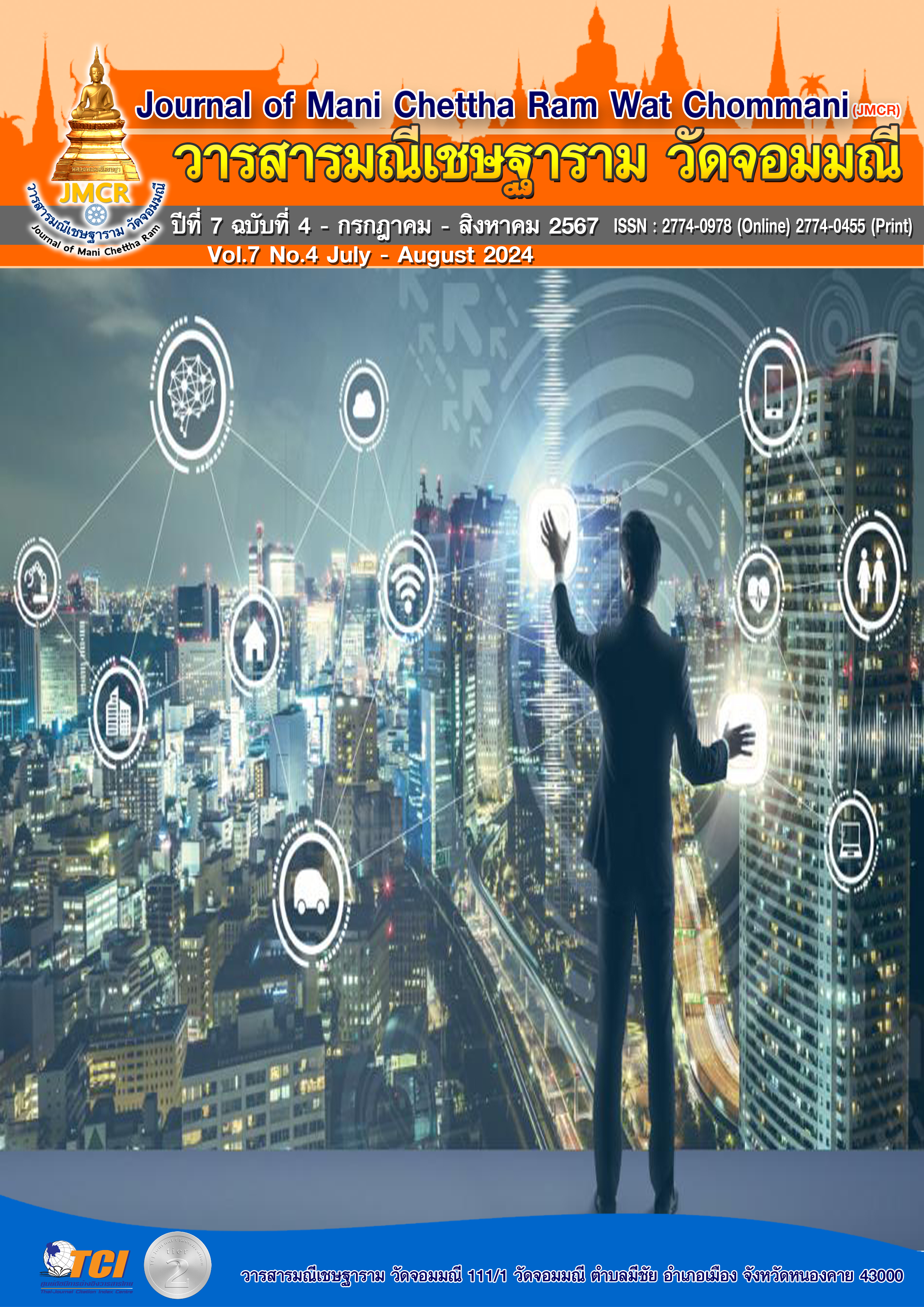SCHOOL ADMINISTRATION THROUGH DESIGN THINKING
Keywords:
School administration, Design thinking, UsersAbstract
In today's era, school administration requires adaptation and innovation to keep up with the rapid changes in technology, society, and the economy. Educational institutions need to advance the use of technology in teaching and learning and prepare students with the necessary 21stcentury skills, create flexible environments, and promote mental well-being. However, development efforts must consider risks due to budget and resource constraints. Administrators must improve management methods to effectively meet the needs of students, teachers, staff, parents, and the community.
Design Thinking is a popular and beneficial approach in the management process because it is a user-centered process that employs creative and flexible problem-solving methods. Design Thinking is an innovation process aimed at deeply solving problems with a user-centered focus, incorporating diverse perspectives to develop solutions that enhance work efficiency, and continuously testing and developing innovative prototypes. It consists of five steps: 1) Empathize, 2) Define, 3) Ideate, 4) Prototype, and 5) Test. This process can be applied to various tasks, including school administration, which emphasizes responding to the needs of users such as students, teachers, staff, and the community.
Adopting Design Thinking in school administration can help school leaders develop management and teaching strategies that enable students to achieve curriculum goals, enhance the potential of teachers and educational personnel effectively, promote participatory management, foster a learning-conducive environment, and better meet students' needs. Moreover, it can create a space for developing innovations that address the demands of the ever-changing global society, both now and in the future.
References
คึกฤทธิ์ ศิลาลาย. (2566). แนวทางการบริหารสถานศึกษาในยุควิถีใหม่. วารสารวิชาการรัตนบุศย์, 5(1), 58-74.
ทินกร เผ่ากันทะ. (2565). แนวทางการบริหารสถานศึกษาในยุดิจิทัล. วารสารสมาคมพัฒนาวิชาชีพการบริหารการศึกษาแห่งประเทศไทย, 4(2), 37-45.
นิตยา หงษ์ขุนทด และคณะ. (2567). กลยุทธ์การบริหารสถานศึกษาในยุคปกติใหม่. วารสารสมาคมพัฒนาวิชาชีพการบริหารการศึกษาแห่งประเทศไทย, 6(1), 427-436.
ไปรมา อิศรเสนา ณ อยุธยา และชูจิต ตรีรัตนพันธ์. (2562). การคิดเชิงออกแบบ : เรียนรู้ด้วยการลงมือทำ. กรุงเทพมหานคร : ศูนย์สร้างสรรค์การออกแบบ.
พีรดร แก้วลาย และขวัญ พงษ์หาญยุทธ. (2562). Design Thinking กระบวนการคิดเชิงออกแบบเพื่อการพัฒนาท้องถิ่น. กรุงเทพมหานคร : สถาบันพระปกเกล้า.
วรชัย วิภูอุปรโคตร. (2024). แนวทางการบริหารสถานศึกษาอย่างสร้างสรรค์ของผู้บริหารสถานศึกษาขั้นพื้นฐานในยุค 4.0. วารสาร มข. (ฉบับบัณฑิตศึกษา) สาขาสังคมศาสตร์และมนุษยศาสตร์, 9(1), 60-69.
วัสสิกา รุมาคม และคณะ. (2565). การบริหารสถานศึกษาในยุคความผิดปกติใหม่หลังวิกฤตโควิด-19. วารสารมหาจุฬานาครทรรศน์, 9(6),16-30.
สงบ อินทรมณี. (2562). การบริหารสถานศึกษาในยุดิจิทัล. วารสารวิชาการมหาวิทยาลัยการจัดการและเทคโนโลยีอีสเทิร์น,16(1), 353 - 360.
สุกัญญา แช่มช้อย. (2562). การบริหารสถานศึกษาในยุดิจิทัล. (พิมพ์ครั้งที่ 2). กรุงเทพมหานคร : จุฬาลงกรณ์มหาวิทยาลัย.
สุกัญญา แช่มช้อย. (2565). การบริหารสถานศึกษาเพื่อการสร้างนวัตกรรุ่นเยาว์. กรุงเทพมหานคร : จุฬาลงกรณ์มหาวิทยาลัย.
สุวิมล โพธิ์กลิ่น. (2564). นวัตกรรมการบริหารสถานศึกยุคใหม่. วารสาร มจร อุบลปริทรรศน์, 6(3), 975-984.
สำนักงานสภาพัฒนาการเศรษฐกิจและสังคมแห่งชาติ. (2562). สรุปสาระสำคัญแผนแม่บทภายใต้ยุทธศาสตร์ชาติ. (พิมพ์ครั้งที่ 2). กรุงเทพมหานคร : บริษัท ซีดี มีเดีย ไกด์ จำกัด.
อภิชัย สุรเดชเดชากุล. (2567). แนวทางการพัฒนาทักษะการบริหารสถานศึกษาในศตวรรษที่ 21, 2(2), 20-36.
อุกฤษฎ์ ดอนบรรเทา และเอกราช โฆษิตพิมาณเวช. (2567). การบริหารจัดการสถานศึกษายุคใหม่อย่างมีประสิทธิภาพ. วารสารมณีเชษฐาราม วัดจอมมณี, 7(2), 529-545.
Awuku, O. Alex. (2023). School Administration Guide : Education Bureau. Retireved April 23, 2024, From https://www.edb.gov.hk/attachment/en/sch-admin/regulations/sch-admin-guide/SAG_E.pdf.
Brown, T. (2009). Change by Design: How Design Thinking Creates New Alternatives for Business and Society. HarperBusiness.
Caldwell, B. J., & Spinks, J. M. (2021). The self-managing school. Routledge.
Chao, G. (2015). Behind the sticky notes: Design Thinking. Stanford Daily. Retrieved June 6, 2024, From https://www.stanforddaily.com/what-is-design-thinking/
Cox, M. (2016). "The Fundamentals of Design Thinking." Journal of Design Innovation, 12(1), 45-60.
Cox, M. (2016). The role of design thinking in innovation. Retireved June 3, 2024, From
https://medium.com/pancentric-people/the-role-of-design-thinking-in-innovation-ba68a3d91683
Hargreaves, A., & Fullan, M. (2012). Professional Capital: Transforming Teaching in Every School. Teachers College Press.
IDEO. (2015). The Field Guide to Human-Centered Design. IDEO.org.
Kelley, D., & Kelley, T. (2013). Creative Confidence: Unleashing the Creative Potential Within Us All. Crown Business.
Sabir, U., Sittar, K., & Alvi, G. F. (July - September 2023). Role of Administration and Development of Education System at Schools Level. Pakistan Languages and Humanities Review, 7(3), 750-762.
The Education Commission. (2016). The Learning Generation: Investing in Education for a Changing World. Retrieved July 12, From https://report.educationcommission.org
Tran, N. (2016). Design Thinking Playbook for Change Management in K12 Schools. Retireved June 5, 2024, From http://issuu.com/normantran2001/docs/design_thinking_playboo


